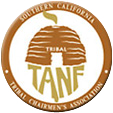Edited Excerpt by Valena Dismukes
from an article by Bryn Barabas Potter
For some Native Californians, the New Year begins on Winter Solstice. For the Tongva (Gabrielino), the New Year will begin on December 21, 2013, followed by a year of ten months. For the first time, a modern calendar based on the traditional Tongva has been printed.
Most of the world has been following the familiar twelve-month Gregorian calendar since 1582. Prior to that, other civilizations devised their form of tracking the years. In terms of timekeeping, what was happening in Southern California? The question intrigued Glenn Miller, Jr, a local astronomer of Tongva descent who currently teaches astronomy at Pasadena City College. As he learned more about his maternal heritage, he came across the 1822 writings of Friar Boscana that mentioned the traditional indigenous year.
Ever the scientist, Miller took on a challenge---to recreate an indigenous California version of 2013. He brought the idea to a group of volunteers at the Haramokngna American Indian Cultural Center (the Center), and the idea evolved. With a committee composed of Kat High, Glenn Miller, Jr., Bryn Potter, Peggy Ronning, Valena Dismukes, the idea slowly evolved. Miller’s Tongva heritage, use of Tongva words, and the location of the Tongva homeland in the San Gabriel Mountains is what made this version “A Tongva Calendar.”
A Tongva Calendar is innovative and cutting-edge, yet also basic and ancient. How does a ten-month year work? Simply put, the year begins on the Winter Solstice. Months generally start with the new crescent Moon. As lunar phases vary year to year, "vacant days” occur which don’t belong to any month. In this calendar, months 5 and 10 have “vacant days,” noted by a slightly different color.
This is a useable, contemporary calendar, full-color, 8 ½ x 11 wall calendar with beautiful Native American artwork to enjoy day and boxes for each day in which to write notes. The Gregorian and Tongva systems are artfully combined, with an unexpected twist but still in a functional format. Astronomical events like solstices and eclipses are noted, as are Daylight Saving Time and American holidays. Days are listed Sunday through Saturday with standard Gregorian numbering and Tongva names. Most of the months include information about the Tongva culture and language.
By looking at months in a different way, maybe minds cam be opened to an alternate way of viewing the year. Malcolm Margolin (author, and publisher of HeyDay books) summed it up in these words: “It is an art project that will allow people to reconceptualize their world.”
A Tongva Calendar is available at Haramokngna for $20. All of the proceeds of this volunteer production with benefit the Center and its programs. To order, visit the Haramokngna website (Haramokngna.org).






